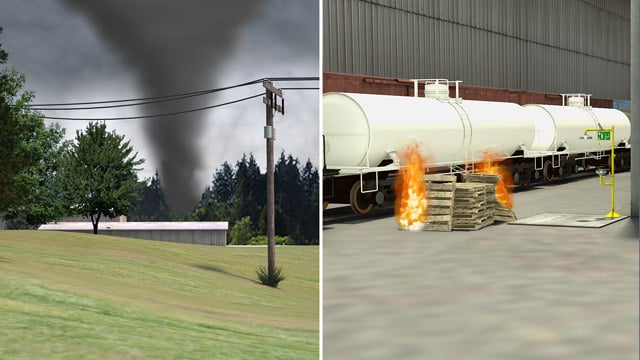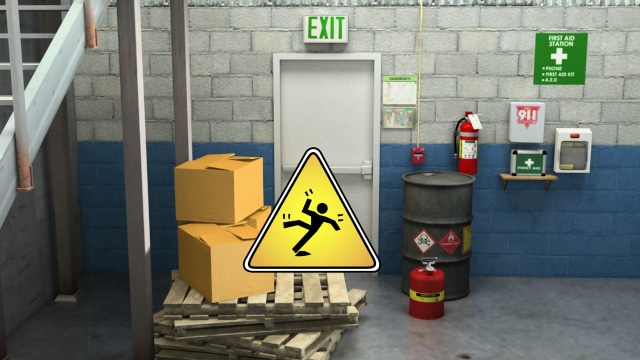




Safety Management: Emergency Action Plans
This course covers the importance of creating emergency action plans in preparation for unexpected emergencies, accidents, and evacuations at industrial workplaces. Based on OSHA standards and recognized industry best practices, this course is intended as an introduction or refresher for general industry workers and those responsible for developing an emergency action plan. Participants will learn how emergency action plans benefit workplaces by ensuring safety and compliance with OSHA emergency action plan training requirements.
Request a demoCourse Details
Learning Objectives
- List items in a typical emergency action plan
- List types of employee roles in an emergency
- List sources for medical care in an emergency
- Identify different types of emergency personal protective equipment (PPE)
- Describe requirements for evacuation routes, exits, and assembly points
- State why emergency training is important
Specs
| Course Level | Intermediate |
| Languages | English, Portuguese, Chinese, French, German, Italian, Japanese, Spanish |
| Compatibility | Audio, Video |
| Based on: | 29 CFR 1910.38 - Emergency Action Plans |
Key Questions
A plan set up by your employer that explains procedures to follow during an emergency. Effective emergency action plan training ensures everyone knows their role.
What should I know about alarms, alerts, and warning systems?Know how to set off alarms at appropriate times, understand what all alarms, alerts, and warnings mean, and know what to do if they are activated. This is a key component of emergency preparedness training for employees.
What should I know about emergency medical care?Know procedures for getting medical care onsite and how to call for off-site medical care when necessary. Emergency management training for employees should address these protocols.
What is an emergency shelter?A safe place inside your workplace where you should go in the event of certain emergencies, such as a tornado. Your employer should identify these safe places and explain when you should go there, as part of a good emergency action plan.
How should I leave the work area during an emergency?You should know the primary and secondary evacuation routes. Try to use the primary route first, and then the secondary. Follow the evacuation route through the emergency exit and gather at the emergency assembly point. Regular review of this procedure ensures compliance with emergency action plan OSHA training requirements.
Sample Video Transcript
Every year, workplace emergencies cause thousands of injuries and deaths in the United States. These emergencies may be natural or manmade, and include:
- Radiological incidents
- Fires and explosions
- Floods and blizzards
- Hurricanes and tornadoes
- Earthquakes and tsunamis
- Chemical spills and toxic gas releases
- Workplace violence, bomb threats, and civil disturbances
During emergencies, the situation is often made worse by panic, confusion, lack of information, incorrect information, and limited visibility. Workplaces and employees that have prepared in advance often have a better chance of surviving the crisis.
Additional Resources
- U.S. Department of Labor’s Occupational Safety & Health Administration (OSHA) – www.osha.gov
- OSHA Safety and Health Topics – www.osha.gov/SLTC/emergencypreparedness/index.html
- OSHA eTools – www.osha.gov/SLTC/etools/evacuation/index.html
- OSHA Training Publications – www.osha.gov/Publications/osha3088.pdf
- National Institute for Occupational Safety and Health (NIOSH) – www.cdc.gov/niosh/
- Emergency Preparedness – www.cdc.gov/niosh/topics/emergency.html
- Emergency Action Plan Template – www.cdc.gov/niosh/docs/2004-101/emrgact/emrgact.pdf
Course Applies To
Demos + Pricing
Learn more about our courses, get pricing, and see our platform.











